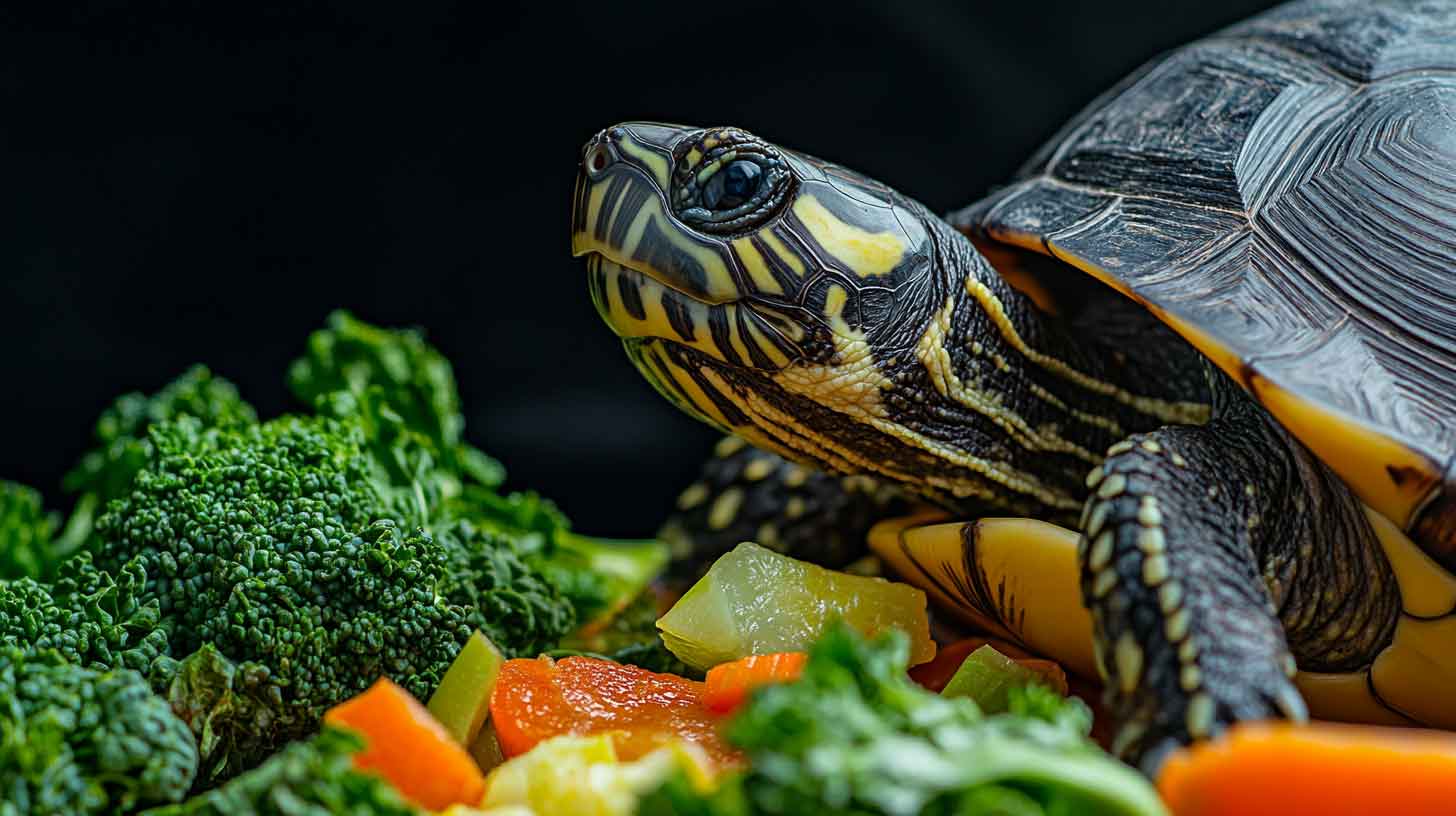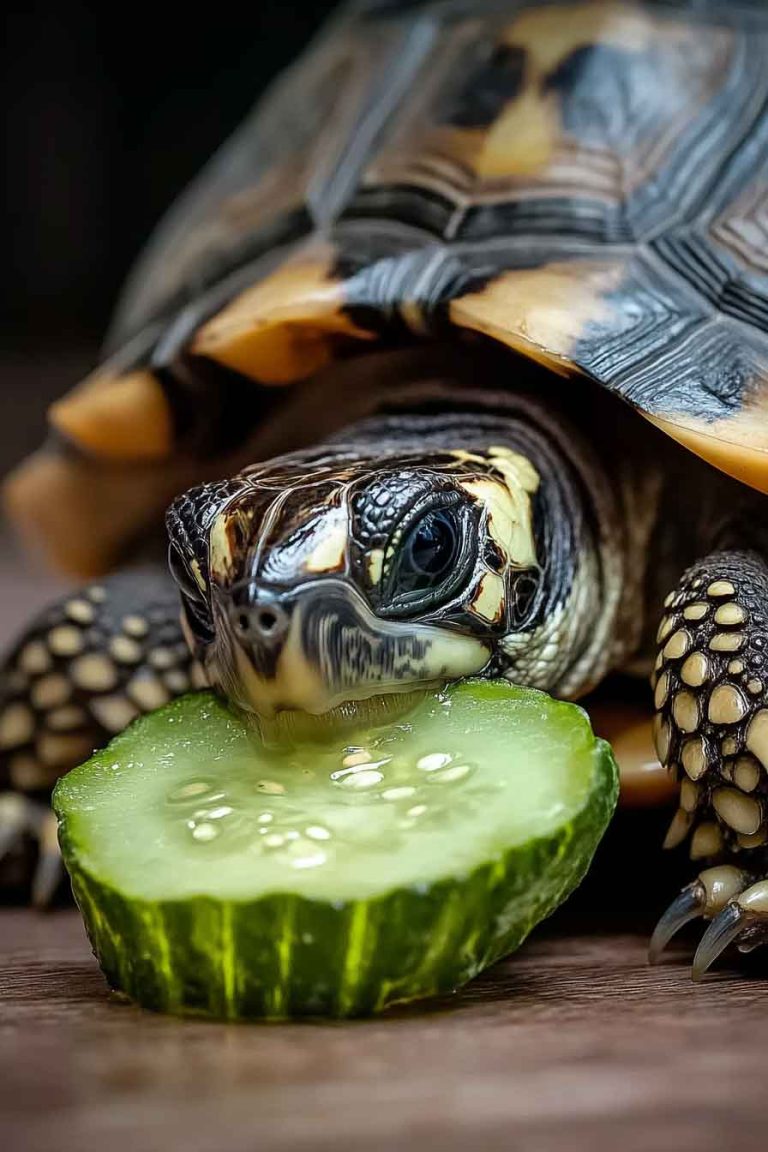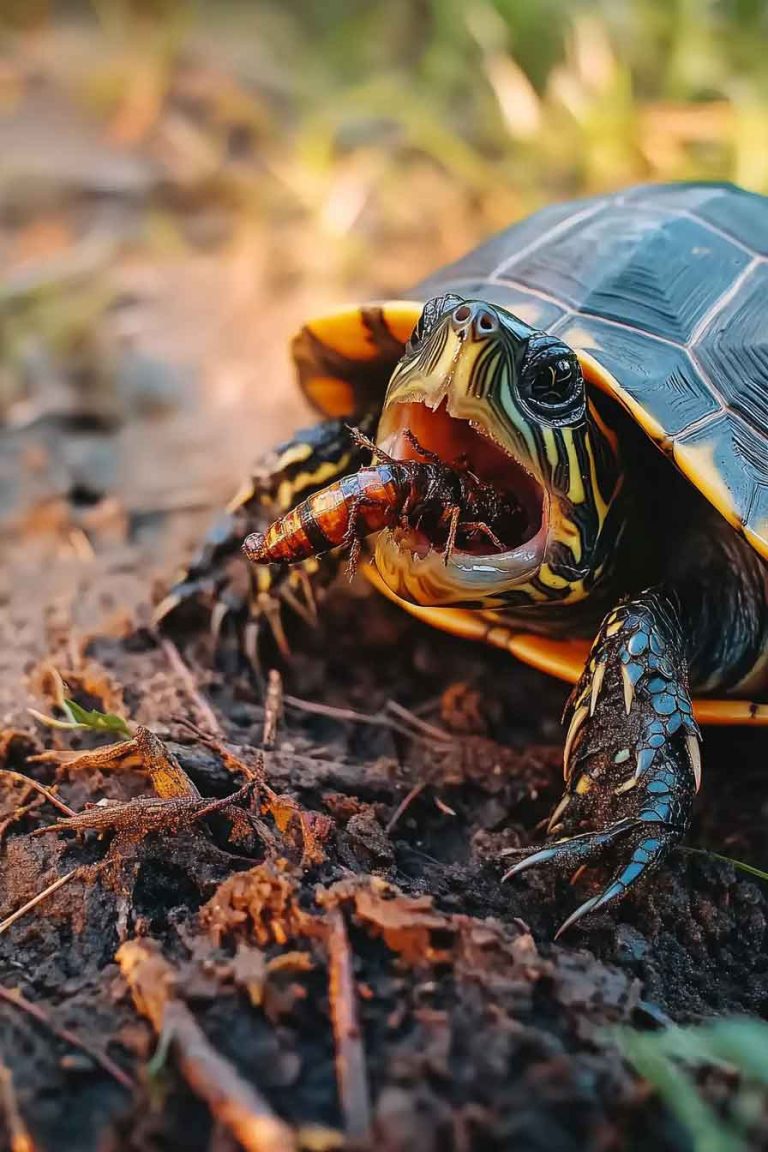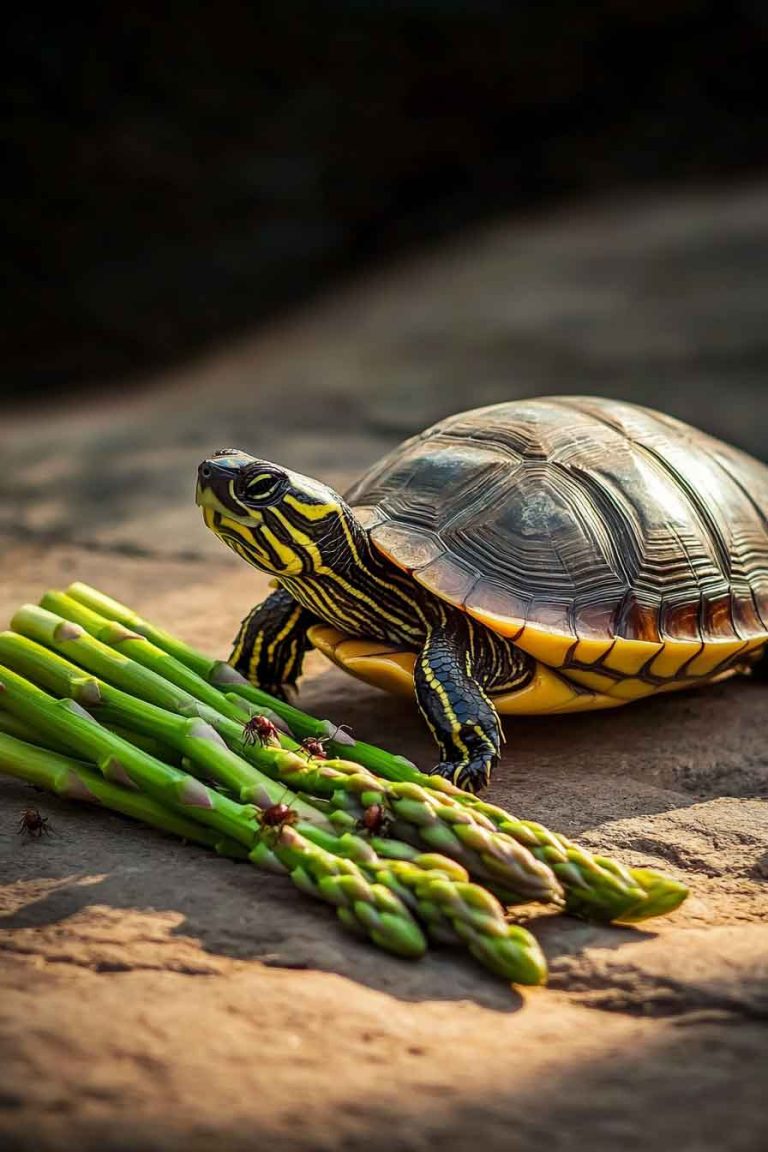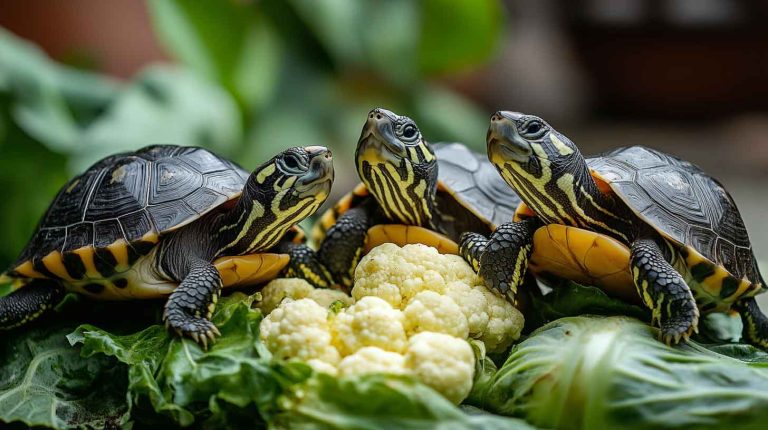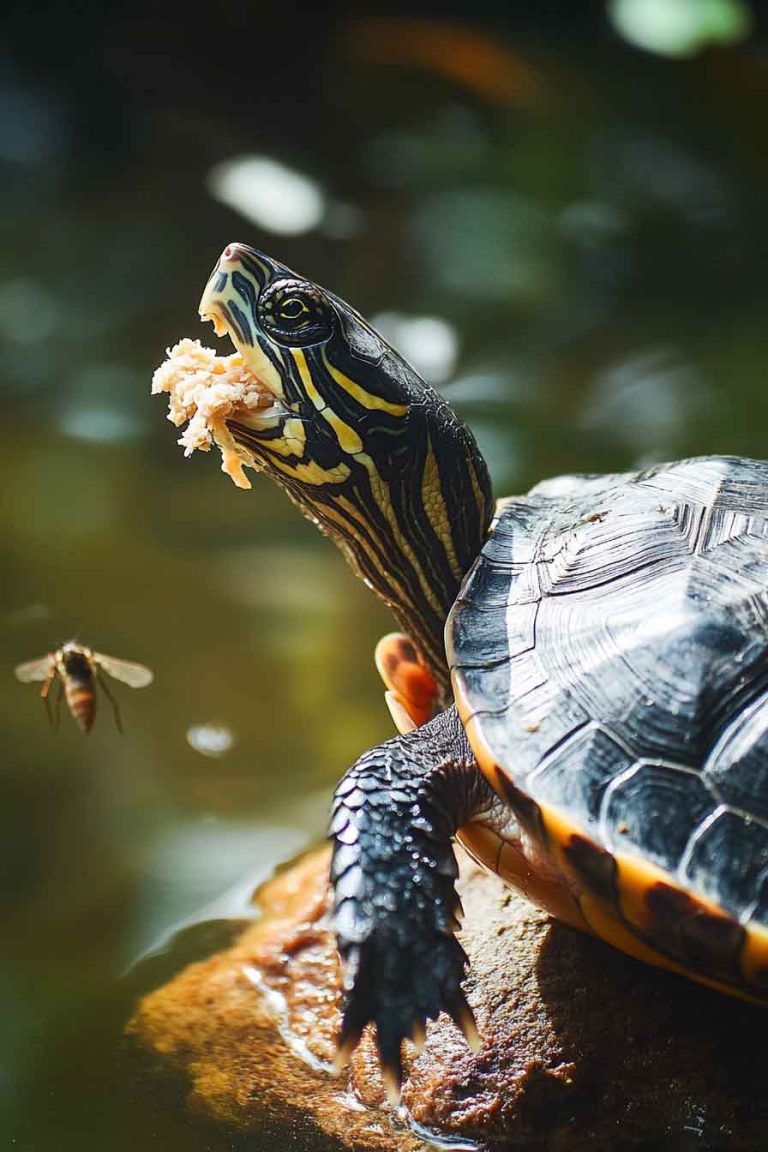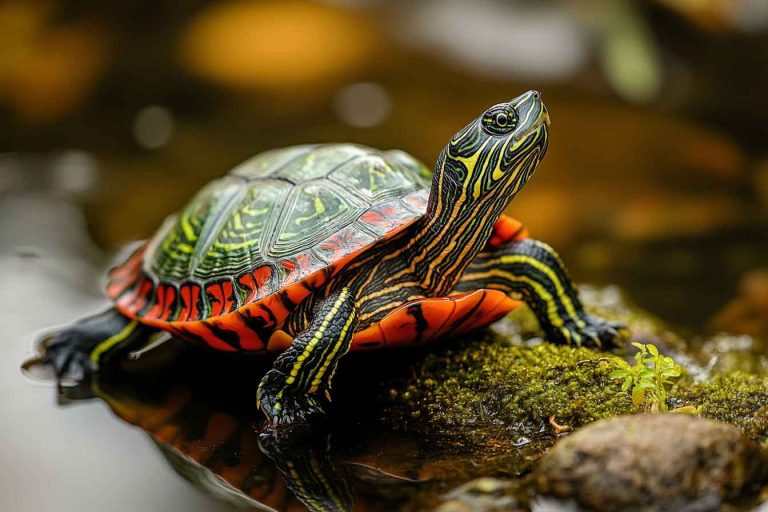What to Feed Your Pet Turtle? Full Diet Guide for Healthy Turtles
When I first brought my turtle home, I had no idea what to feed him. Like many new turtle parents, I assumed that turtles could eat pretty much anything green. Boy, was I wrong! After years of caring for my shelled friend and researching turtle nutrition, I’ve learned that feeding your pet turtle properly is…
When I first brought my turtle home, I had no idea what to feed him. Like many new turtle parents, I assumed that turtles could eat pretty much anything green. Boy, was I wrong! After years of caring for my shelled friend and researching turtle nutrition, I’ve learned that feeding your pet turtle properly is one of the most important aspects of turtle care.
If you’re wondering what to feed your pet turtle, you’ve come to the right place. In this comprehensive guide, I’ll share everything I’ve learned about turtle nutrition, from the basics of what turtles eat in the wild to creating the perfect diet for your pet at home.
Understanding Your Turtle’s Natural Diet
Before we dive into specific foods, let me explain something crucial: not all turtles eat the same thing. The diet your turtle needs depends entirely on what species you have and where they come from in the wild.
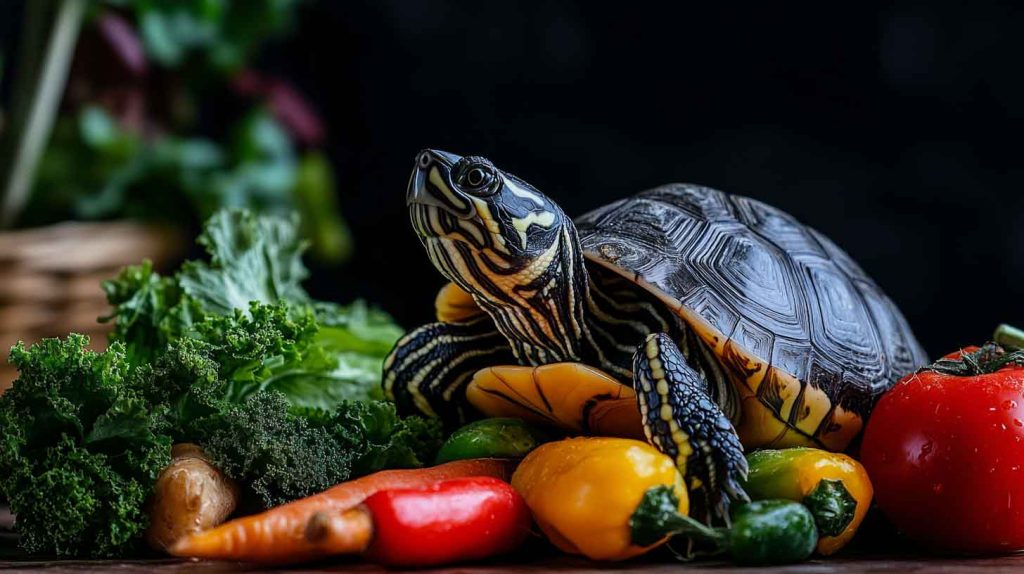
I’ve observed that turtles generally fall into three dietary categories:
Carnivorous Turtles – These are mostly aquatic species that primarily eat meat Herbivorous Turtles – Land tortoises that mainly consume plants Omnivorous Turtles – Many species that eat both plants and animals
When I research what to feed my turtle, I always start by understanding what they would eat in their natural habitat. This approach has never failed me, and it’s the foundation of proper turtle nutrition.
What Do Different Turtle Species Eat?
Aquatic Turtles (Red-Eared Sliders, Painted Turtles)
In my experience, aquatic turtles are primarily carnivorous when they’re young and become more omnivorous as they age. Here’s what I feed my aquatic turtles:
Protein Sources:
- Commercial turtle pellets (I use these as the staple food)
- Feeder fish like goldfish or minnows
- Bloodworms and earthworms
- Crickets and other insects
- Cooked chicken or turkey (occasionally)
- Hard-boiled eggs (shell included for calcium)
Plant Matter:
- Leafy greens like romaine lettuce, collard greens, and dandelion leaves
- Aquatic plants such as water lettuce and water hyacinth
- Small amounts of fruits like strawberries or melon
I’ve noticed that younger aquatic turtles need about 75% protein and 25% vegetables, while adults do better with 50% protein and 50% plant matter.
Box Turtles
Box turtles are true omnivores, and I’ve found they have quite diverse appetites. Here’s what works best for my box turtles:
Animal Protein:
- Earthworms (their absolute favorite!)
- Slugs and snails
- Crickets and beetles
- Small amounts of cooked chicken
- Commercial turtle food
Fruits and Vegetables:
- Berries (strawberries, blueberries, blackberries)
- Melons and other soft fruits
- Mushrooms (safe varieties only)
- Leafy greens
- Squash and sweet potatoes
I feed my box turtles about 60% animal protein and 40% plant matter, adjusting based on the season and their activity level.
Land Tortoises (Russian, Hermann’s, Sulcata)
Land tortoises are herbivores, and I’ve learned they need a high-fiber, low-protein diet. Here’s what I provide:
Daily Staples:
- Grasses and hay (Timothy hay is excellent)
- Weeds like dandelions, plantain, and clover
- Leafy greens (collard greens, mustard greens, turnip tops)
- Flowers (hibiscus, roses, nasturtiums)
Occasional Treats:
- Small amounts of fruits (once or twice a week)
- Cactus pads (prickly pear)
- Commercial tortoise pellets (sparingly)
I make sure about 80-90% of my tortoise’s diet consists of grasses and weeds, with the remainder being vegetables and occasional fruits.
Essential Nutritional Requirements
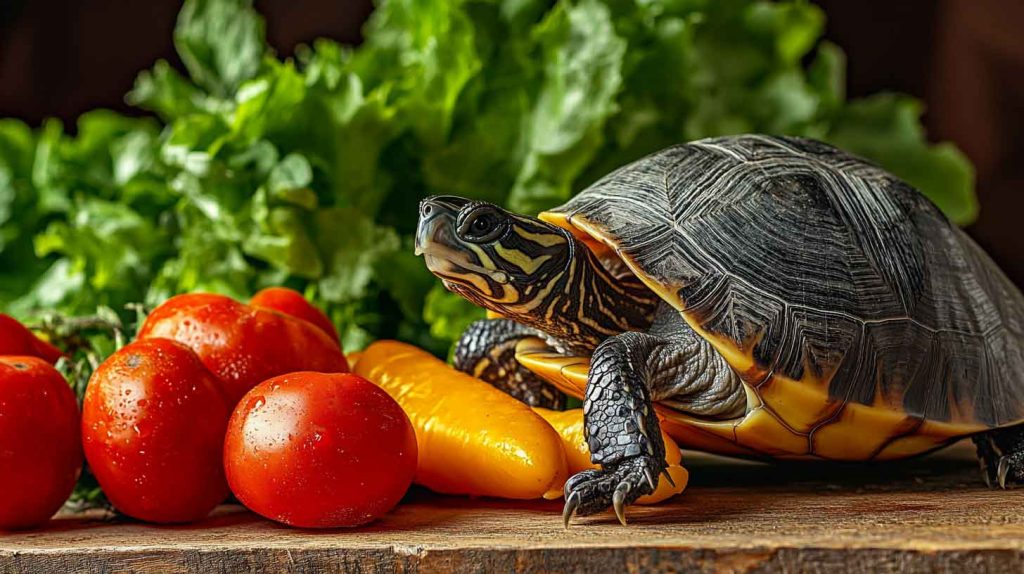
The Calcium-Phosphorus Ratio
This is something I cannot stress enough: turtles need a 2:1 calcium to phosphorus ratio in their diet. When I first learned this, it completely changed how I fed my turtles.
Foods high in calcium that I regularly include:
- Dark leafy greens (collard greens, dandelion greens)
- Calcium-dusted insects
- Cuttlebone pieces
- Crushed eggshells
I avoid feeding too many foods high in phosphorus, such as:
- Spinach (also contains oxalates)
- Iceberg lettuce (low nutritional value anyway)
- Most fruits (I give these sparingly)
Vitamin Requirements
Vitamin A is crucial for eye and respiratory health. I provide this through:
- Orange vegetables like carrots and sweet potatoes
- Dark leafy greens
- Commercial turtle foods fortified with vitamin A
Vitamin D3 is essential for calcium absorption. While UVB lighting helps turtles synthesize this vitamin, I also ensure their diet includes D3-fortified foods.
Foods You Should Never Feed Your Turtle
Through my years of turtle keeping, I’ve learned there are certain foods that are absolutely toxic to turtles. I never feed my turtles:
Vegetables That Are Toxic
- Onions and garlic – These contain compounds that can cause anemia
- Avocado – Contains persin, which is toxic to many animals
- Rhubarb – High in oxalates and potentially toxic
- Raw beans – Can be toxic and difficult to digest
Dangerous Fruits
- Citrus fruits – Too acidic for most turtle species
- Grapes and raisins – Can cause kidney problems
- Cherries – The pits contain cyanide compounds
Other Foods to Avoid
- Chocolate – Toxic to most animals
- Processed human foods – High in salt, sugar, and preservatives
- Dairy products – Turtles are lactose intolerant
- Bread and pasta – Provide no nutritional value and can cause digestive issues
Creating a Feeding Schedule
I’ve found that consistency is key when feeding turtles. Here’s the schedule I follow:
For Young Turtles (Under 1 Year)
- Feed daily
- Provide as much as they can eat in 15 minutes
- Focus on high-protein foods for growth
For Adult Turtles
- Feed every other day or every third day
- Provide enough food for a 15-20 minute feeding session
- Balance protein with vegetables and occasional fruits
For Senior Turtles
- May need daily feeding in smaller portions
- Softer foods may be easier to digest
- Monitor weight and adjust accordingly
Commercial vs. Natural Foods
When I started keeping turtles, I relied heavily on commercial turtle foods. While these can be convenient and nutritionally balanced, I’ve learned that a varied diet of natural foods is usually better.
When I Use Commercial Foods
- As a staple base for aquatic turtles
- When traveling or unable to provide fresh foods
- To ensure consistent vitamin and mineral intake
Why I Prefer Natural Foods
- More closely mimics their wild diet
- Often fresher and more engaging for the turtle
- Allows for greater dietary variety
- Usually less expensive in the long run
Feeding Tips and Best Practices
Preparation Methods
I always wash all vegetables and fruits thoroughly before feeding. For harder vegetables like carrots, I sometimes grate or chop them into smaller pieces to make eating easier.
Feeding Location
For aquatic turtles, I feed them in their tank, but I remove uneaten food after 15-20 minutes to prevent water quality issues. For land turtles, I use a shallow dish that’s easy to clean.
Seasonal Adjustments
I adjust my turtles’ diets based on the season. In winter, when they’re less active, I feed them less frequently. In spring and summer, when they’re more active, they need more food.
Monitoring Your Turtle’s Health
I watch for signs that indicate whether my feeding routine is working:
- Healthy shell growth
- Active behavior
- Regular bowel movements
- Clear eyes and nostrils
- Appropriate weight for their size
Special Considerations for Different Life Stages
Baby Turtles
Baby turtles need more protein for proper growth and development. I feed them daily and ensure about 80% of their diet consists of protein sources.
Gravid Females
Female turtles preparing to lay eggs need extra calcium. During breeding season, I increase calcium-rich foods and sometimes provide calcium supplements.
Hibernating Species
Some turtle species hibernate or brumate. I adjust their feeding schedule accordingly, gradually reducing food as temperatures drop and increasing it as they become active again.
Supplements and Vitamins
While I prefer natural foods, sometimes supplements are necessary. I use:
Calcium Powder – Dusted on food 2-3 times per week Vitamin D3 Supplements – For turtles without adequate UVB exposure Multivitamin Powder – Occasionally, to ensure complete nutrition
However, I’m careful not to over-supplement, as this can be just as harmful as deficiencies.
Common Feeding Mistakes to Avoid
Through my experience, I’ve seen many turtle owners make these mistakes:
Overfeeding
This is probably the most common mistake I see. Overweight turtles can develop serious health problems. I always stick to the “15-minute rule” – if they can’t finish their food in 15 minutes, I’m giving them too much.
Feeding Only Commercial Food
While convenient, a diet consisting only of commercial turtle food lacks the variety turtles need. I always supplement with fresh foods.
Inconsistent Feeding
Turtles thrive on routine. I feed my turtles at the same time of day and stick to a consistent schedule.
Ignoring Species-Specific Needs
What works for a red-eared slider won’t work for a Russian tortoise. I always research the specific needs of each species I keep.
Signs of Nutritional Problems
I’ve learned to watch for these warning signs that indicate dietary issues:
Vitamin A Deficiency:
- Swollen eyes
- Respiratory infections
- Poor appetite
Calcium Deficiency:
- Soft or deformed shell
- Difficulty moving
- Tremors or seizures
Protein Deficiency:
- Slow growth in young turtles
- Lethargy
- Poor wound healing
Overfeeding:
- Difficulty retracting into shell
- Pyramiding of the shell
- Difficulty swimming (in aquatic species)
Creating a Balanced Weekly Menu
Here’s a sample weekly feeding schedule I use for an adult red-eared slider:
Monday: Commercial turtle pellets + collard greens Wednesday: Earthworms + dandelion leaves + small piece of strawberry Friday: Cooked chicken + romaine lettuce + calcium supplement Sunday: Feeder fish + water lettuce + grated carrot
For my Russian tortoise, a typical week looks like this:
Daily: Mixed grasses and weeds (dandelions, plantain, clover) Monday: Add collard greens and hibiscus flowers Wednesday: Add grated squash and commercial tortoise pellets Friday: Add mustard greens and a small piece of apple Sunday: Add cactus pad and calcium supplement
Conclusion
Feeding your pet turtle properly is one of the most rewarding aspects of turtle care. It takes time to learn what works best for your specific turtle, but the effort is worth it when you see your shelled friend thriving.
Remember, every turtle is different, and what works for my turtles might need adjustment for yours. Start with the basics I’ve outlined here, observe your turtle’s response, and adjust accordingly. When in doubt, consult with a veterinarian who has experience with reptiles.
I hope this guide helps you provide the best possible nutrition for your turtle. With proper feeding, your turtle can live a long, healthy life and bring you years of joy. If you have any questions about turtle nutrition that I haven’t covered here, don’t hesitate to do additional research or consult with reptile experts in your area.
Your turtle is counting on you to make the right dietary choices, and with this guide, you’re well-equipped to do just that!

